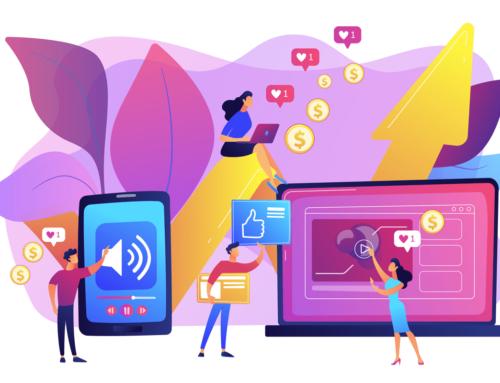Out-of-home forms of advertising, such as billboards, offer brands a way to reach captive audiences of people out and about carrying out daily routines.

Online advertising campaigns get a lot of attention, but there are other ways for brands to reach consumers. Traditional methods, such as billboard advertising, can draw attention when people are off their devices and carrying out their daily routines.
While online advertising is competitive by nature, billboards can subtly grab attention. They circumvent obstacles, such as ad blockers, and are difficult to ignore. Ads that are placed where people spend time are often seen whether people realize it or not. This is what makes billboards and other out-of-home advertising effective.
What does out-of-home advertising mean?
Out-of-home advertising reaches audiences when they are going about their daily routines outside their homes. It includes display advertising in spots where people congregate, spend time waiting or are somehow a captive audience. In the past, out-of-home advertising offered big returns on investment, generating US$5.97 in sales for every dollar spent.
Digital out-of-home advertising combines a big visual impact with the flexibility to change a campaign on the fly.
Examples of out-of-home advertising
The locations vary, but the common goal of out-of-home ads is to be seen by large numbers. Think billboards on busy roads, ads on bus shelters and oversize ads on the sides of buildings. These are familiar examples, but you could also include branded cups sold at sporting events and digital screens that cycle through ads in shopping malls.
Are billboards effective advertising?
Business owners often think of billboards when considering out-of-home advertising because billboards have been around a long time and their size draws attention.
This simplicity can be welcome in a world where the conversation most often revolves around reach, impressions, and conversions. The language around out-of-home advertising is more straightforward, and the results are easier to evaluate.
An out-of-home ad might be the first experience people have with your brand and could be what inspires them to do an online search for your company. These ads can be important for brand recognition as well. For example, a customer who sees a billboard or other out-of-home ad is 48 percent more likely to click on a mobile ad from your brand afterwards.
Current challenges with out-of-home advertising
While traditional advertising methods may have long histories that make them popular with business owners, they’re not foolproof. Uncertainty has plagued out-of-home advertising since the beginning of the COVID-19 pandemic, and recovery of this ad market could take until 2023, according to eMarketer.
Why are uncertain times so challenging to navigate with traditional advertising channels? First, massive ad campaigns take a long time to plan and often require visuals and ad copy to be approved long before the ad launches. While this type of planning can be appealing due to its predictability, it can also leave brands with highly visual ads that don’t resonate or seem tone-deaf.
The pandemic offered a unique challenge when large gatherings of all kinds were prevented or discouraged. When the success of an advertising channel relies heavily on people being out in crowds, any development that keeps people away from events and public spaces can have a significant impact. If gathering restrictions keep people off the roads and away from public spaces, how does a company recoup its investment in these ads?
How to make an impact with billboard advertising
If billboard advertising feels right for your business, there are ways to get the most out of your campaigns. The trick is to balance high visibility with as much insight as possible to help mitigate potential risks.
Here are a few questions to ask yourself when evaluating billboards and other out-of-home advertising:
1. Can your ad be seen and understood quickly?
Most billboard advertising is glimpsed for seconds as people drive by your location. Even if your billboard is displayed in an area where people travel on foot, they are likely to only glance up at it quickly. Billboard ads should be highly visual, with a clear and easy-to-understand image making the biggest impact. Keep your ad copy short, with just a few words to drive your message home.
2. How might this campaign be shared?
If you decide to advertise on the outside of a 100-year-old building, your ad may be seen by more than just people walking by. A photo shared online on social media can give you the visibility you didn’t expect, with audiences you didn’t predict. This can give your ad a powerful boost if you plan for it.
Consider how people will experience your ad in different ways and decide if shareability is a goal for your campaign.
3. Is this the best location to reach my target audience?
A high-traffic location is only valuable to you if your ideal customers spend time there. Figure out who you want to attract to your company, then do market research to learn more about where they spend time and what they care about. For more information, learn how to identify your target audience.
Are your target customers living in the suburbs and commuting, or are they downtown in the new warehouse district? Pair the right ad with the right location, and you’re more likely to reach relevant audiences and get the most out of your ad.
4. Are there digital options I can consider?
Staying open to digital developments can help you protect your marketing investment. Digital billboards are an excellent opportunity for companies to gain big visibility but retain the flexibility to change their campaigns while they are still live.
For example, you may want to explore advertising in busy shopping malls. You could create multichannel advertising campaigns by having some static ads that stay up throughout the campaign and digital displays that enable you to update messaging as needed.
5. What are competitors doing?
Check out what your competition is doing if you’re planning an ad campaign for an area with multiple billboards. Do they have billboards in this location? What style of ads? You may want to avoid placing an ad next to your competitor unless you’re positive yours is a surefire winner with a better offer or more creativity.
It’s rarely a good idea to try to one-up other companies publicly. Scout out the location ahead of time and adjust your billboard campaign accordingly.
Brands wanting to explore out-of-home advertising need to pay as much attention to messaging, visual effects, and value as they do when evaluating digital campaigns. Billboards can certainly be memorable and, like other out-of-home advertising, can be a valuable addition to a multichannel advertising campaign.
The trick is to recognize the shortcomings of more traditional methods and lean into new developments to protect your investment and keep your visibility. In addition, marketers may find that exploring a mix of advertising methods extends their reach with target audiences.
Curious if digital billboard advertising might work for you? Speak to a Postmedia expert to learn more.

